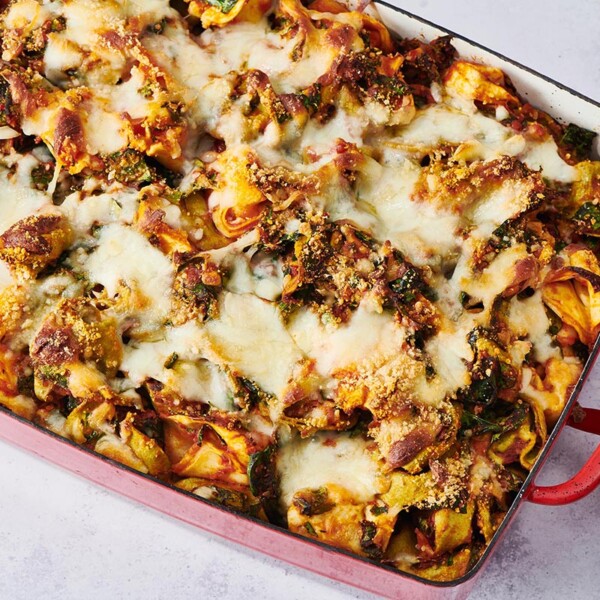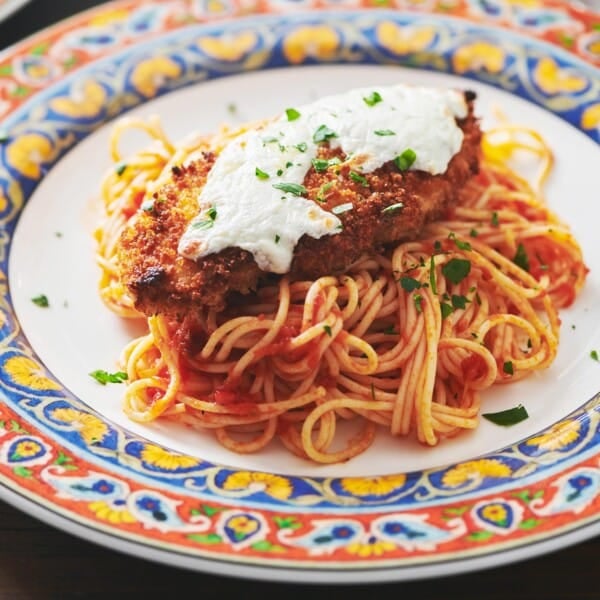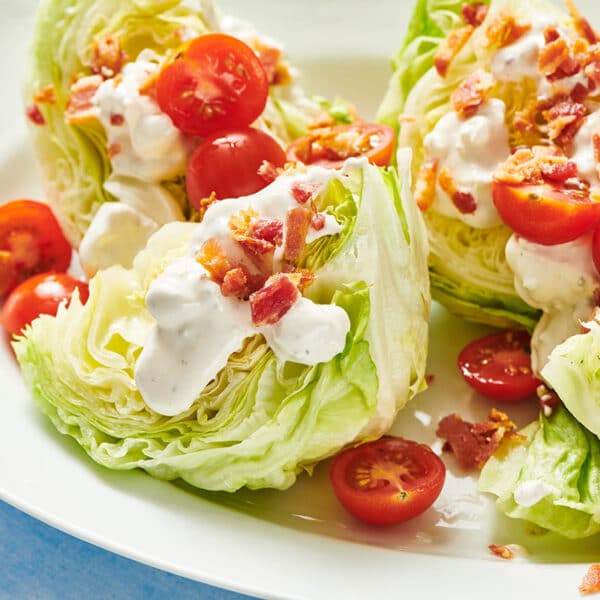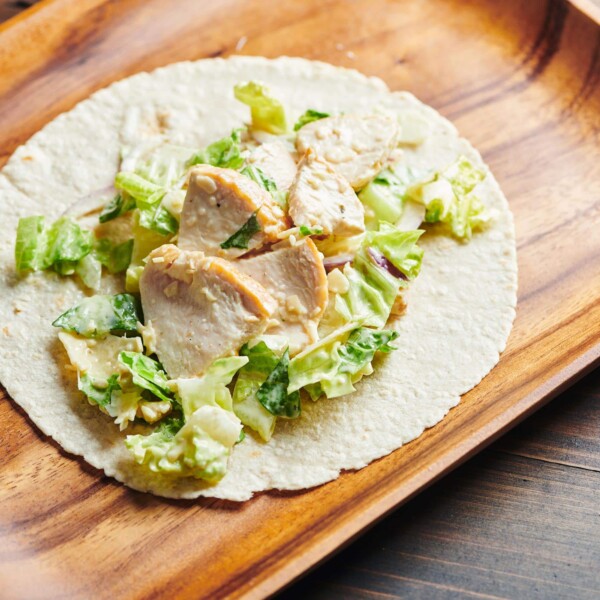Sautéed Escarole
Updated Jul 27, 2023
This post may contain affiliate links. Please read our disclosure policy.
This simple Italian escarole side dish, made with olive oil and garlic, goes with all kinds of main courses.
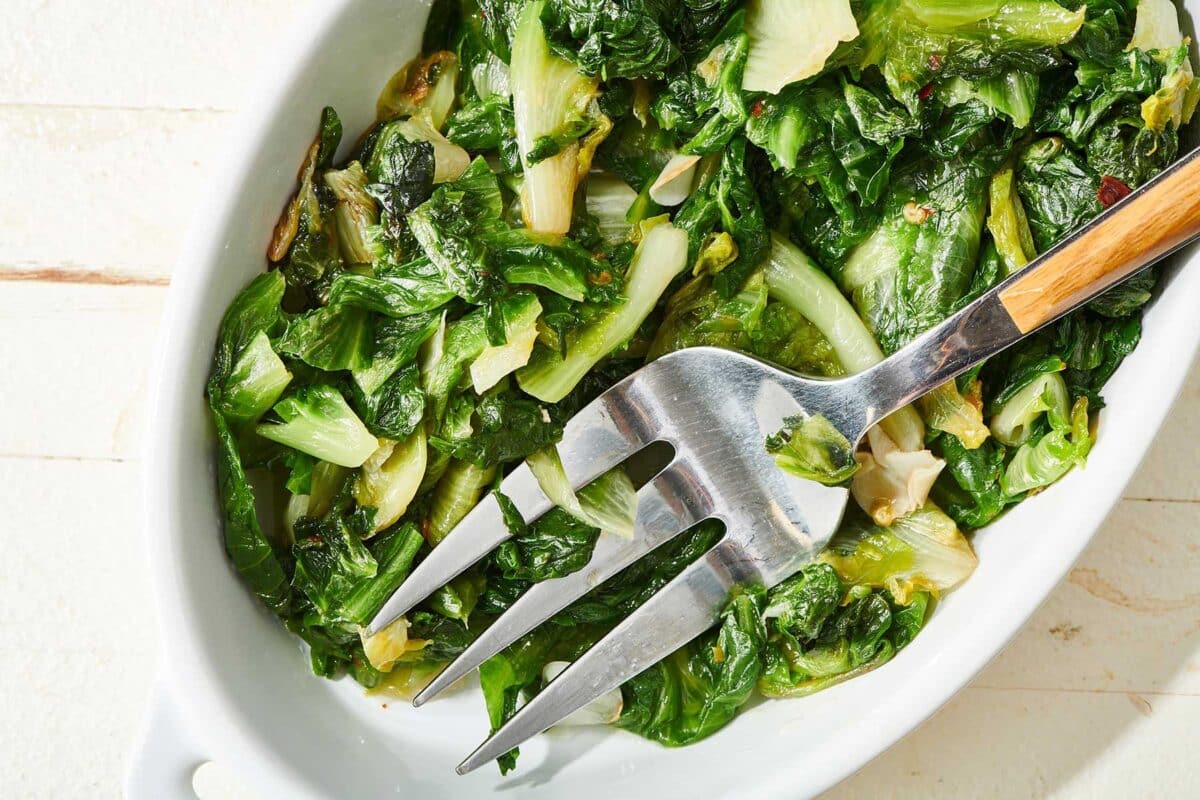
This sturdy leafy green is a part of the chicory family, and has a pronounced but appealing bitterness. Sautéed or cooked escarole is much milder, with a silky texture, and an incredible side to all kinds of rich main courses. It’s very popular in Italy, particularly in Rome and the surrounding areas. Sautéed escarole is a common side dish in Sicilian cooking. Sometimes you might find it labeled or referred to as broad-leaf endive, Bavarian endive, Batavian endive, scarola, and scarole. Leave out the anchovies if you want a vegetarian/vegan escarole side dish.
Sauteed escarole is amazing when paired with main courses that are on the richer side, as the gentle bitterness provides a great foil for the deeper flavors. Think about Porchetta Crispy Skinned Salmon with Dill Sauce, or Meat Lasagna.
What's In This Post?
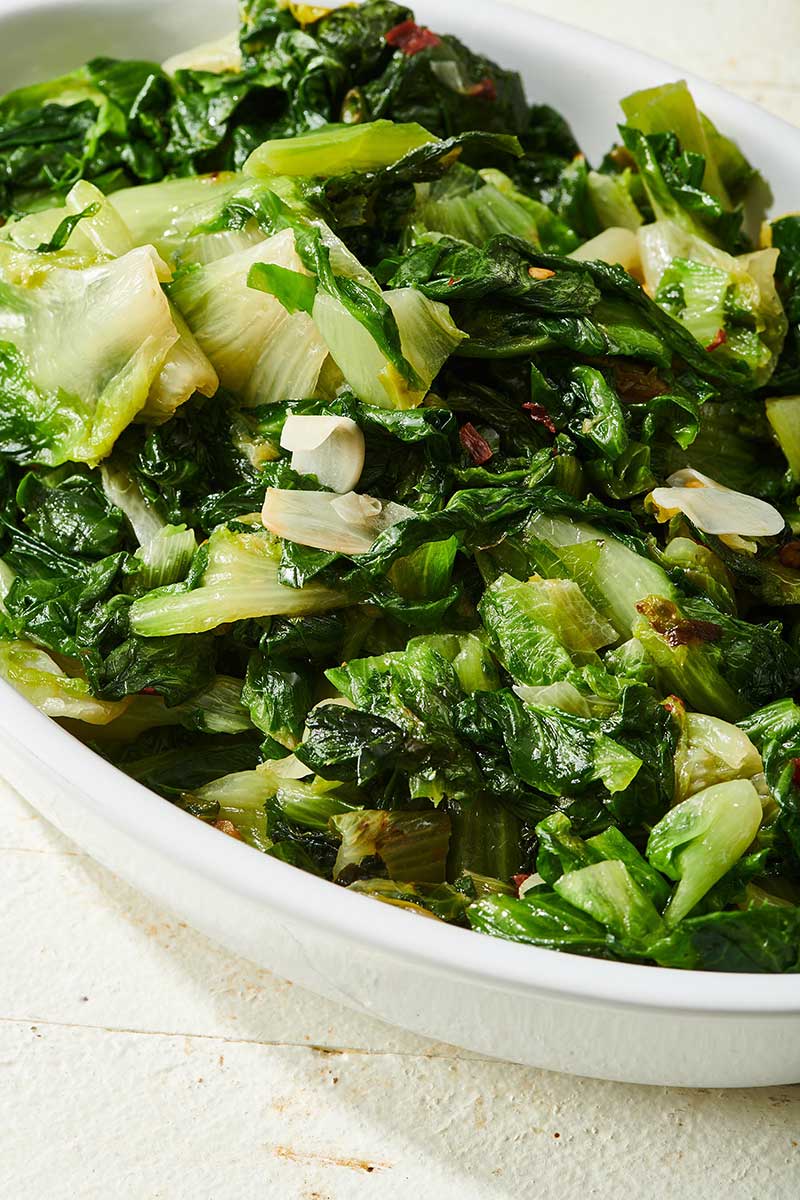
Sauteed Escarole: This simple Italian side dish, made with olive oil and garlic goes with all kinds of main courses.
By signing up, you agree to our Privacy Policy.
How to Prepare Escarole
Escarole can be boiled, blanched, sautéed, steamed, and also eaten raw. The pale, less bitter inner leaves are best for eating in salads and other uncooked preparations. Escarole salads can be absolutely amazing — if you see one on the menu of a good Italian restaurant, give it a go. The studier outer leaves are more bitter and best used for cooked preparations.
The following recipe is for a simply cooked escarole in the Italian style. I personally think this dish goes with everything! You can also add sautéed escarole to soup and stews and use it to top bruschetta or crostini.
FAQs
It looks like a small-ish head of lettuce, the broad leaves on the outside that have jagged edges. It’s a variety of endive, which is evident by its bitter taste, and also the more tender, paler leaves in the core of the lettuce head. The outer leaves are a more vibrant, dark green color.
During the season, spring through summer, escarole can be found at farmers markets. You can find it year-round in supermarkets and grocery stores near the endive, chicory, radicchio, and other greens. Look for firm heads with unblemished leaves. Any leaves that are tinged with brown will be particularly bitter, so remove them before using the escarole. Young pale leaves can be used in Escarole Salad.
Escarole, on the whole, is fairly bitter. The larger outer leaves are more bitter than the tender pale inner small leaves. Each layer of leaves gets progressively lighter toward the core. It is at its most bitter when eaten raw. When it is cooked, the bitterness softens quite a bit.
How long it takes to cook escarole is very much dependent on the taste of the cook and the diner! Escarole can be cooked quite briefly, for about 5 minutes or so, or it can be cooked for much longer, until very tender. I like the combo of blanching the lettuce leaves, then sauteing them, which I think softens the bitterness just enough. The longer you cook escarole, the milder it will get. I like the leaves to be softer and wilted with some bitterness left, but not limp and overcooked.
Yes, in the same way, that you can overcook any vegetable. However, it’s mostly a matter of taste. Some people like their sauteed escarole very tender and soft, so people like it with a little more texture. Remember that escarole will continue to cook once you remove it from the heat, so it will soften. a bit more as it sits. Take it from the heat just before it is done to your liking.
The blanching before the sauteing helps remove the bitterness, as does the sauteing in olive oil.
That is also a total matter of taste! Escarole is significantly more bitter when raw, though again, the inner leaves are milder. Plain-cooked escarole is much less bitter. And escarole can also be added to soups, stews, braises, and so on, where its bitterness might be just a flavor note in the bigger picture.
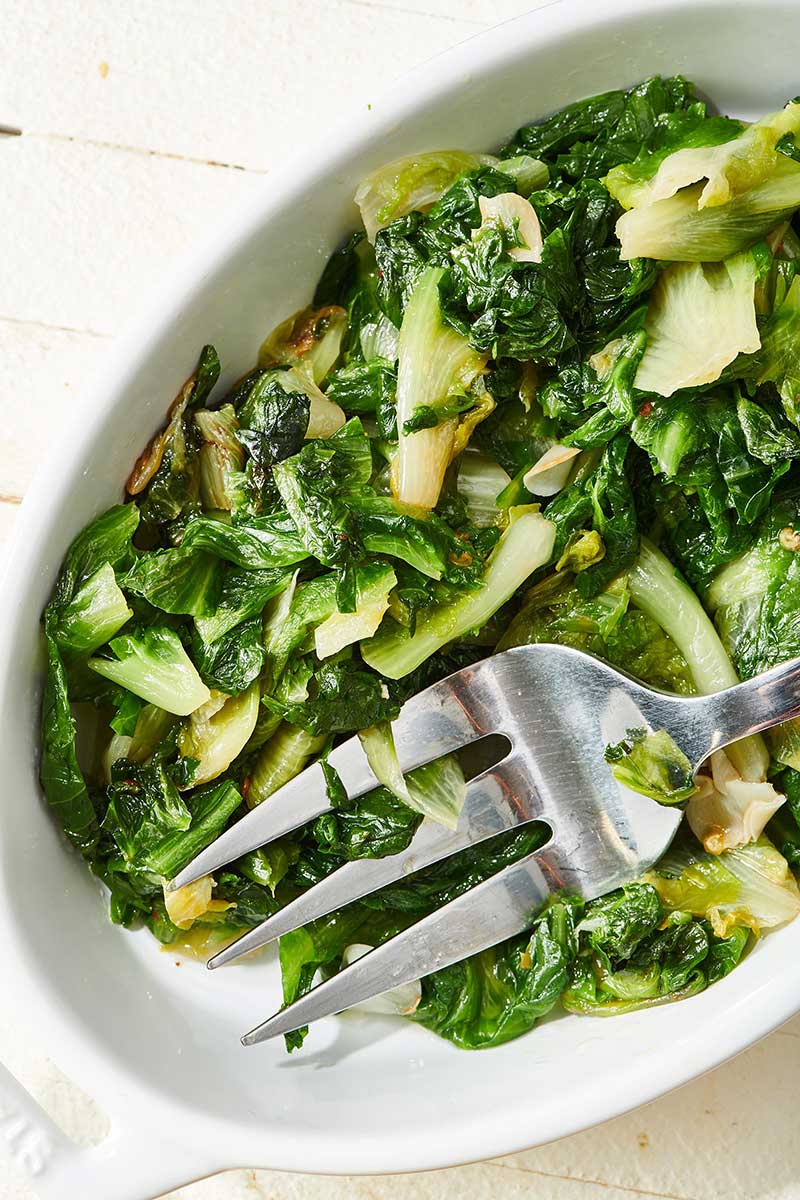
How to Wash and Store Escarole
Trim the base, and remove any bruised or damaged outer escarole leaves. Separate all of the leaves from the core. Fill a large bowl or a very clean sink with cold water. Dunk the leaves into the water and swish them around. Drain or pour out the water, and repeat until there is no grit left on the bottom of the bowl or the sink. You can spin the escarole leaves dry in a salad spinner or roll them up in clean paper towels or a clean dish towel and let the moisture get absorbed.
You can store escarole in its head form in a loose plastic bag in the fridge for up to 4 days. If you want to wash the escarole first, that’s fine. Wash well and store it in a paper towel or dish towel in a loose plastic bag for 4 days.
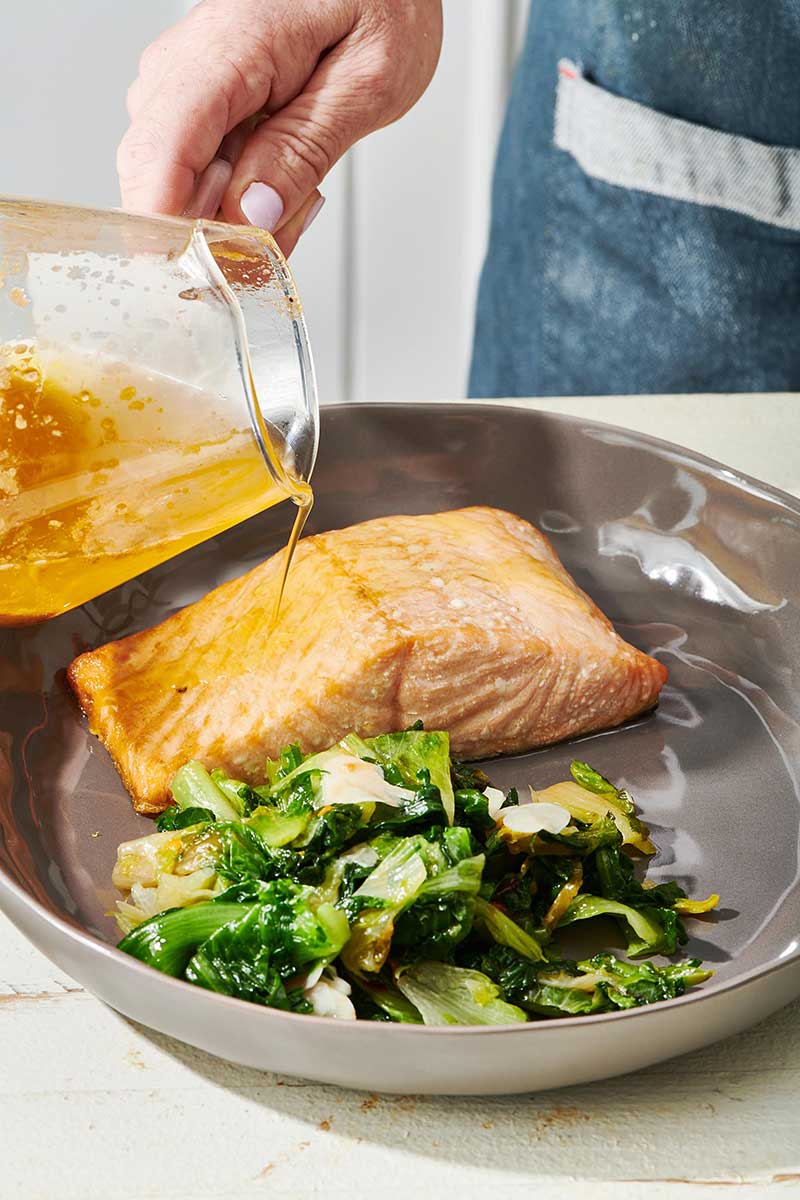
How to Sauté Escarole
- Blanch the escarole: Bring a large pot of salted water to a boil. Have a large bowl of ice water nearby. Add escarole to the pot and cook for 3 minutes until wilted. Reserve ½ cup of the cooking water. Drain the escarole and plunge it into the ice bath. Drain and roughly chop into smaller pieces.
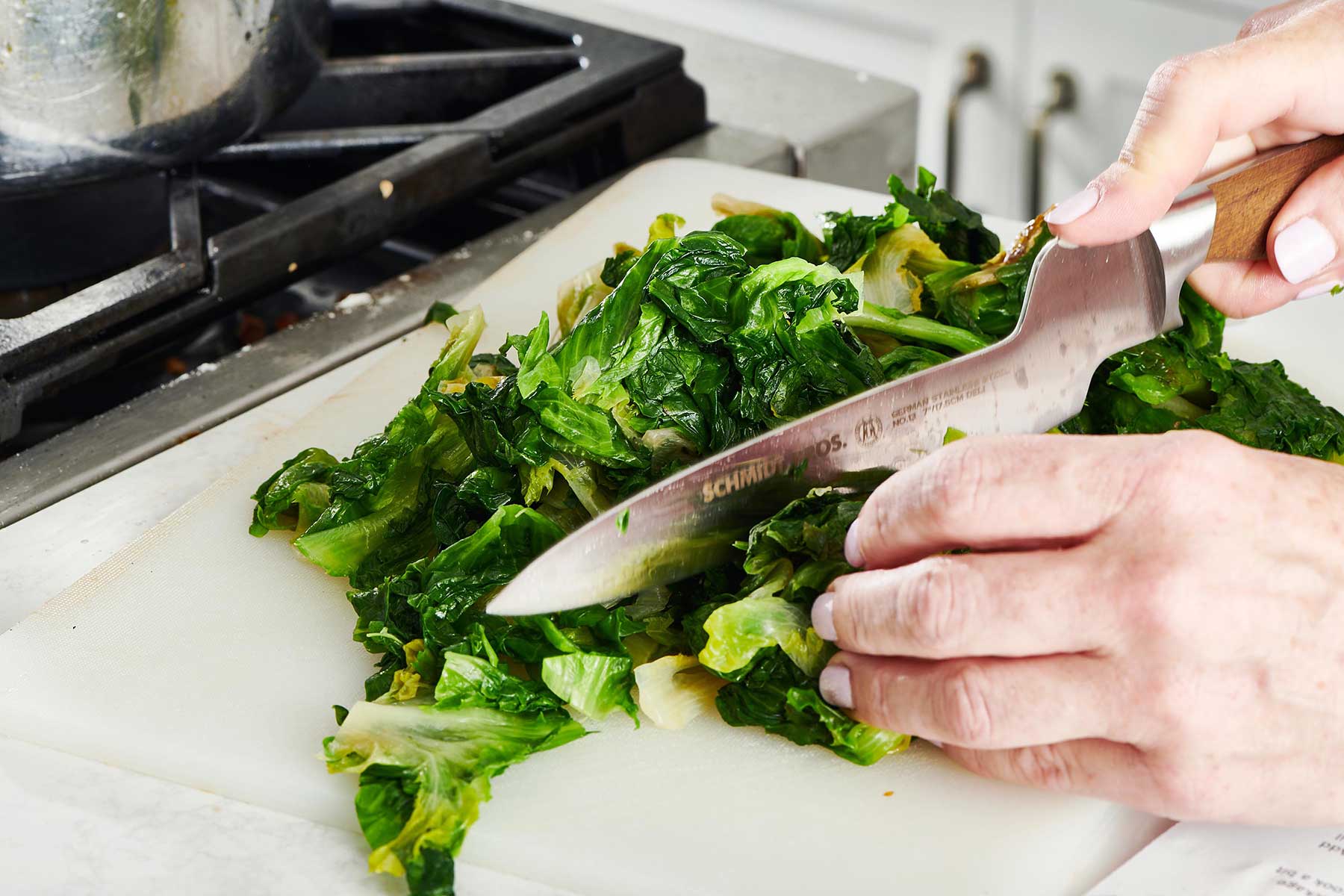
- Sauté the garlic. Cook the garlic, red pepper flakes, and anchovies, if using, in the oil until the garlic is lightly golden.
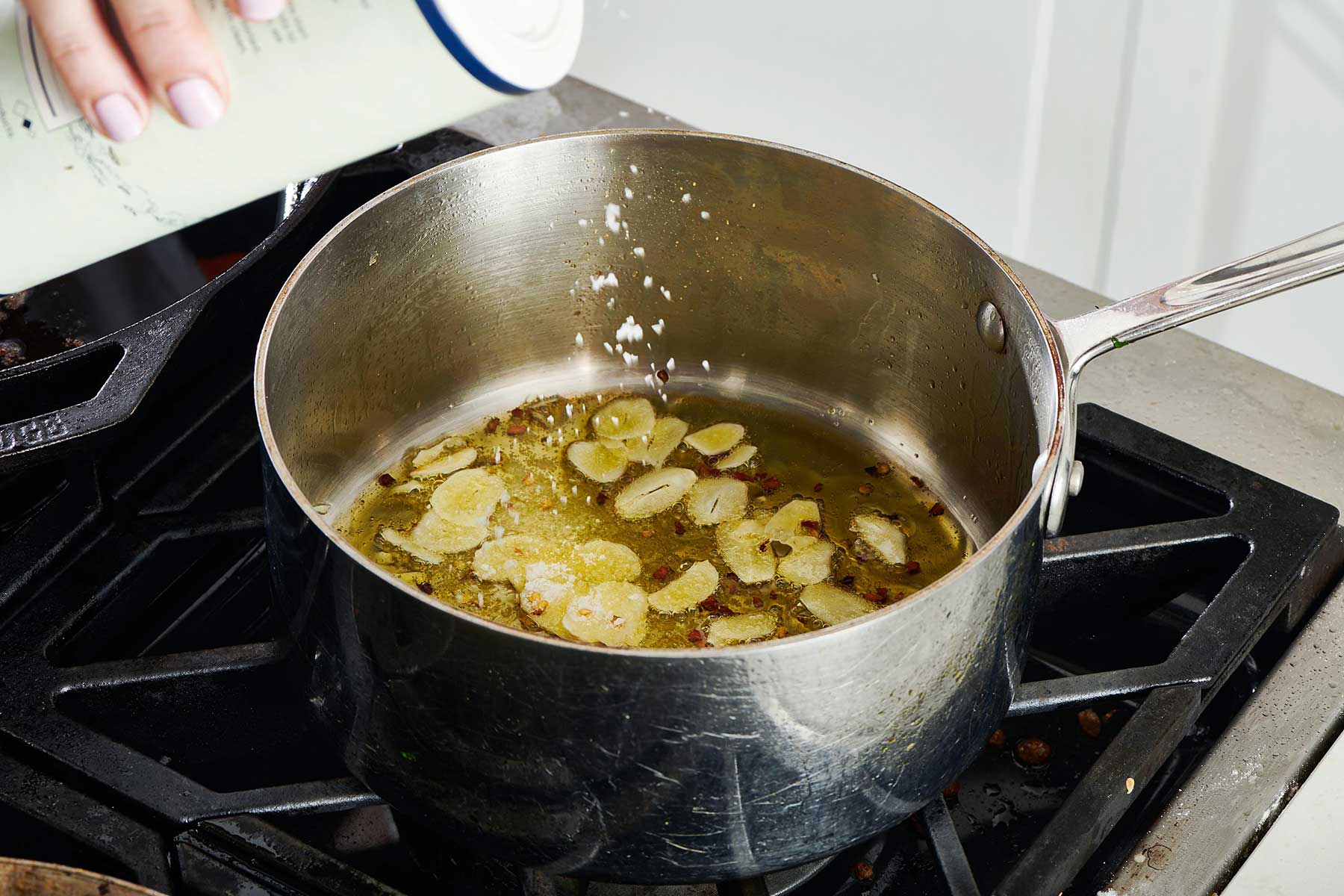
- Sauté the escarole: Add the damp escarole and sauté for 3 or 4 more minutes until the escarole is wilted and hot. If the escarole seems to be getting dry, you can add some of the reserved cooking water as needed.
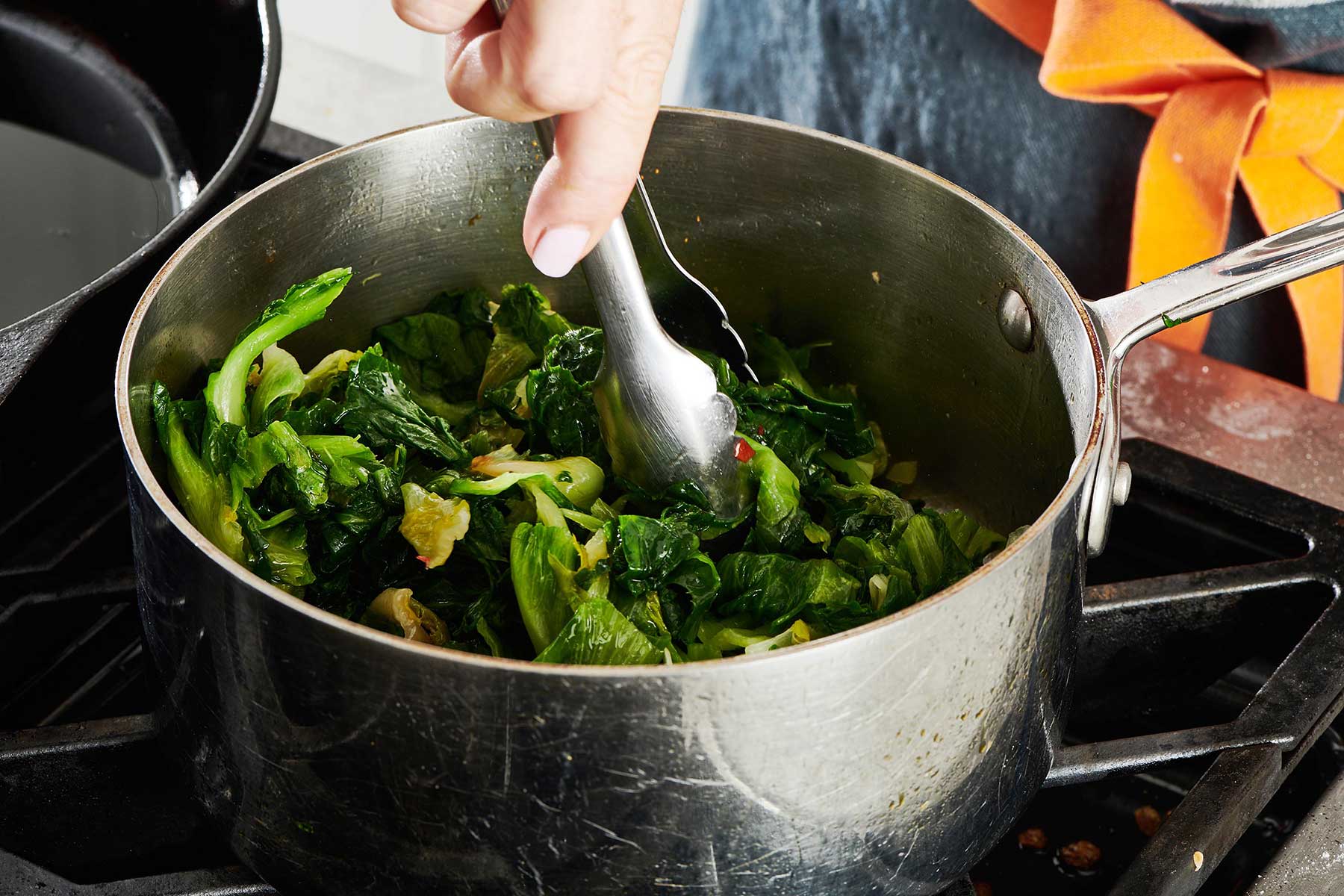
- Serve: Transfer to a serving dish or bowl, and serve hot or warm with a nice final drizzle of olive oil and the lemon wedges.
Sautéed Escarole Add-Ins
You can add any of the following to the escarole while it is sauteing.
- Capers – 1 to 2 tablespoons
- Golden or black raisins
- Chopped olives
- Minced anchovies or anchovy paste
- Peas
- Pine nuts
Make Ahead and Storage
You can serve sauteed escarole at room temperature, as well as hot or warm. Leftovers can be stored in the fridge for up to 4 days. Heat leftovers over low heat in a pot on the stove, or microwave them just until warmed through. Either way, stir them often.
What to Serve With Sautéed Escarole

More Cooked Greens
Pin this now to find it later
Pin It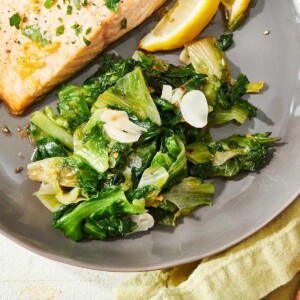
Sautéed Escarole
Ingredients
- Kosher salt (to taste)
- 2 large head escarole (about 2 pounds)
- 3 tablespoons olive oil (plus more for drizzling)
- 4 cloves garlic (thinly sliced)
- ¼ teaspoon red pepper flakes (or more to taste)
- 4 anchovies filets (rinsed and minced or 2 teaspoons anchovy paste; optional)
- Kosher salt and freshly ground black pepper (to taste)
- Lemon wedges (to serve)
Instructions
- Bring a large pot of salted water to a boil. Have a large bowl of ice water nearby. Meanwhile, wash the escarole (see Note). When the water is boiling, add the escarole, and simmer, stirring occasionally for 3 minutes until wilted. Reserve ½ cup of the cooking water, and drain the escarole in a colander. Plunge the escarole into the ice bath; this will lock in the color. Drain and roughly chop into smaller pieces. Set aside.
- Return the pot to medium heat, and heat the oil. When the oil is hot, add the garlic, red pepper flakes, and anchovies, if using. Stir until the garlic is lightly golden, then add the escarole (it should still be a bit wet from the ice bath) and sauté for 3 or 4 more minutes until the escarole is wilted and hot and well combined with the seasonings. If the escarole seems to be getting dry, you can add some of the reserved cooking water as needed.
- Transfer to a serving dish or bowl, and serve hot, or warm with a nice final drizzle of olive oil and the lemon wedges.

